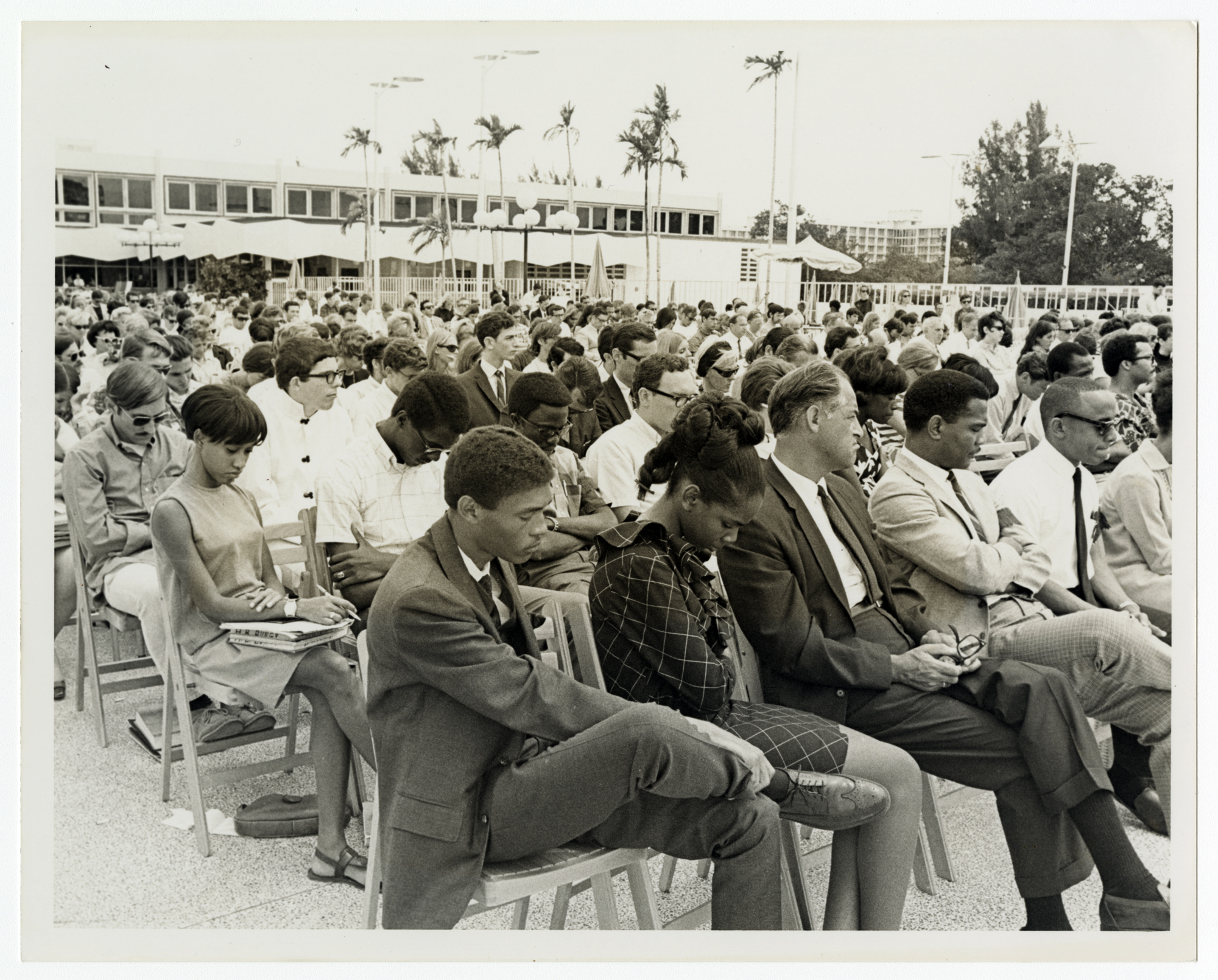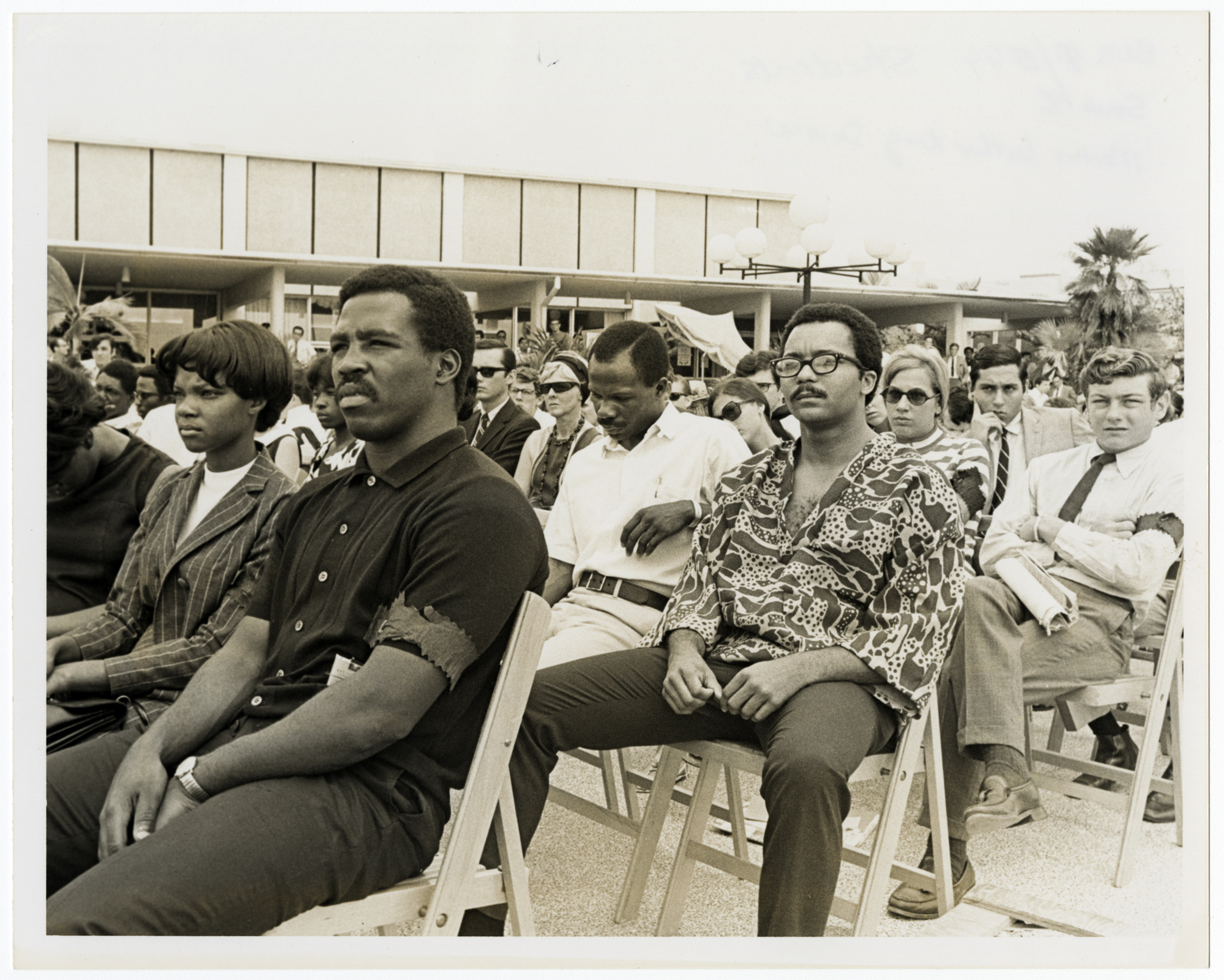-
February 01, 1960
-
April 17, 1960
-
November 18, 1960
-
November 18, 1960
-
January 04, 1961
-
January 06, 1961
-
January 13, 1961
-
January 13, 1961
-
January 31, 1961
-
February 10, 1961
-
May 04, 1961
-
March 08, 1962
-
April 18, 1962
-
June 02, 1962
-
September 01, 1962
-
September 30, 1962
-
July 11, 1963
-
September 15, 1963
-
July 02, 1964
-
March 26, 1965
-
December 10, 1965
-
February 28, 1966
-
April 04, 1968
-
April 09, 1968
-
April 09, 1968
-
April 09, 1968
-
May 07, 1968
-
May 14, 1968
-
May 17, 1968
-
May 17, 1968
-
May 17, 1968
-
May 17, 1968
-
May 21, 1968
-
May 21, 1968
-
July 31, 1968
-
August 16, 1968
-
September 27, 1968
-
October 29, 1968
-
November 05, 1968
-
May 04, 1969
-
November 19, 1969
-
December 16, 1969
-
December 19, 1969
Desegregation in the 1960s
In 1961, the University Of Miami Board Of Trustees voted to "admit qualified students without regard to race or color beginning in the summer of that year." This official integration of the "negro" students on the Coral Gables campus brought no strife. The student newspaper, the Hurricane, reported that black students primarily experienced indifference and stares from their white counterparts. The new "colored" students nevertheless felt the burden of being pioneers of desegregation. In the 1964 issue of the student publication, "Tempo", Bill Genrette wrote about the "Sun-tanned Negro":
Sympathetic whites and concerned Negroes expect a Negro student at newly desegregated school to maintain the 'good Negro image'. In spite of adversity or personal disposition, he is expected to be a living rebuttal to those bigoted and unenlighted folk who yet subscribe to the tired old view that Negroes are not quite as human as white people are.
This initial isolation within the campus and surrounding community - which still resisted national efforts toward desegregation -shifted dramatically in the late 60s. Under the Presidency of Henry King Stanford, the United Black Students (UBS), which had gained formal recognition in 1967, formulated demands and met with university administration to push for higher enrollments in the number of black students, scholarships, integrated staff and faculty as well as the expansion of the curriculum to include the intellectual contributions of Africa and its diaspora. These efforts reflected a desire to reformulate the context in which integrated education was to take place.
President Stanford was sympathetic to the students' agenda and met repeatedly with UBS leaders. He had to mitigate their fervor with the slow pace of university administration as well as the criticism of an off-campus community weary of the advocacy of the civil rights movement.


